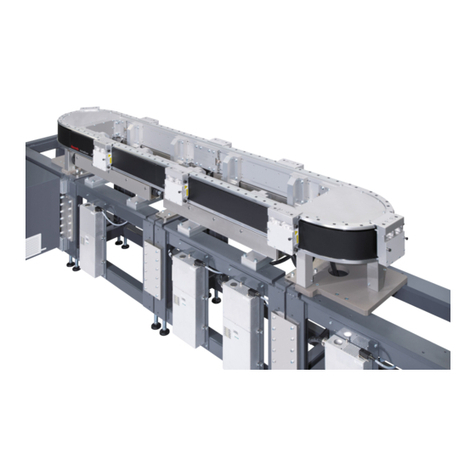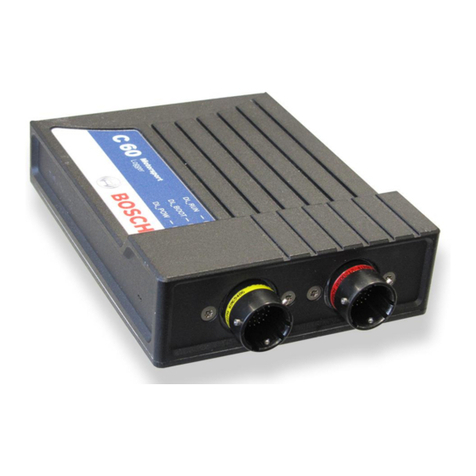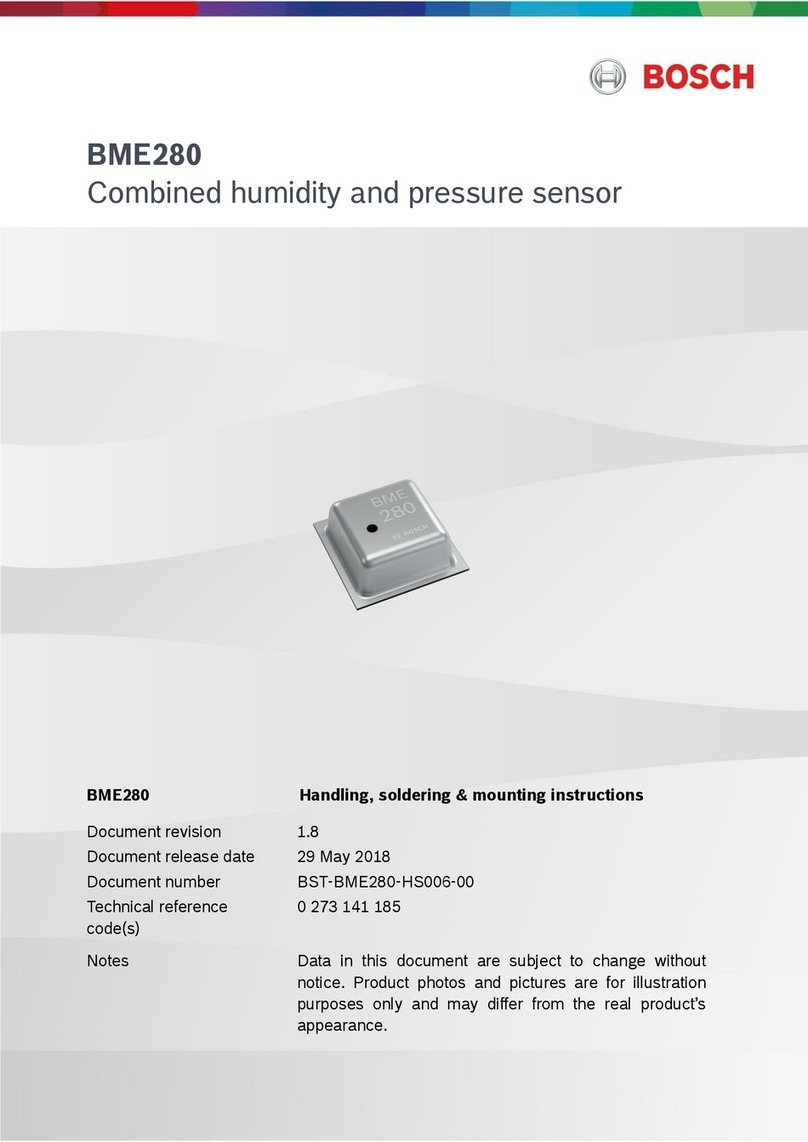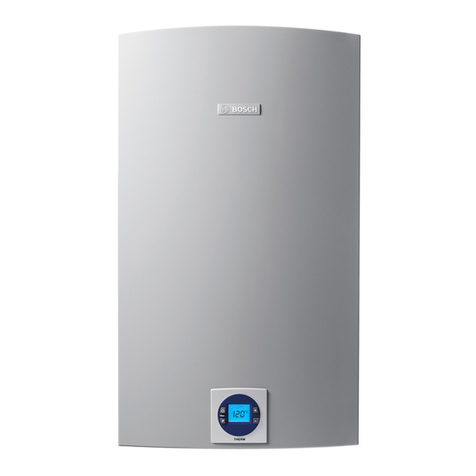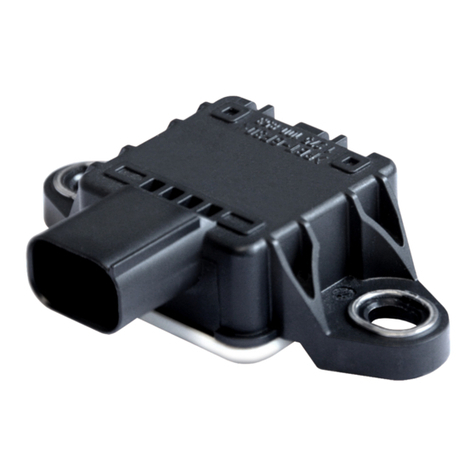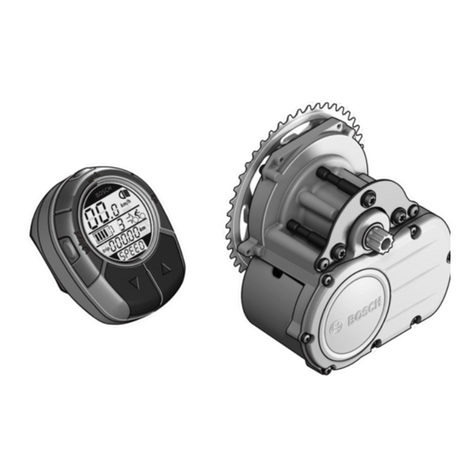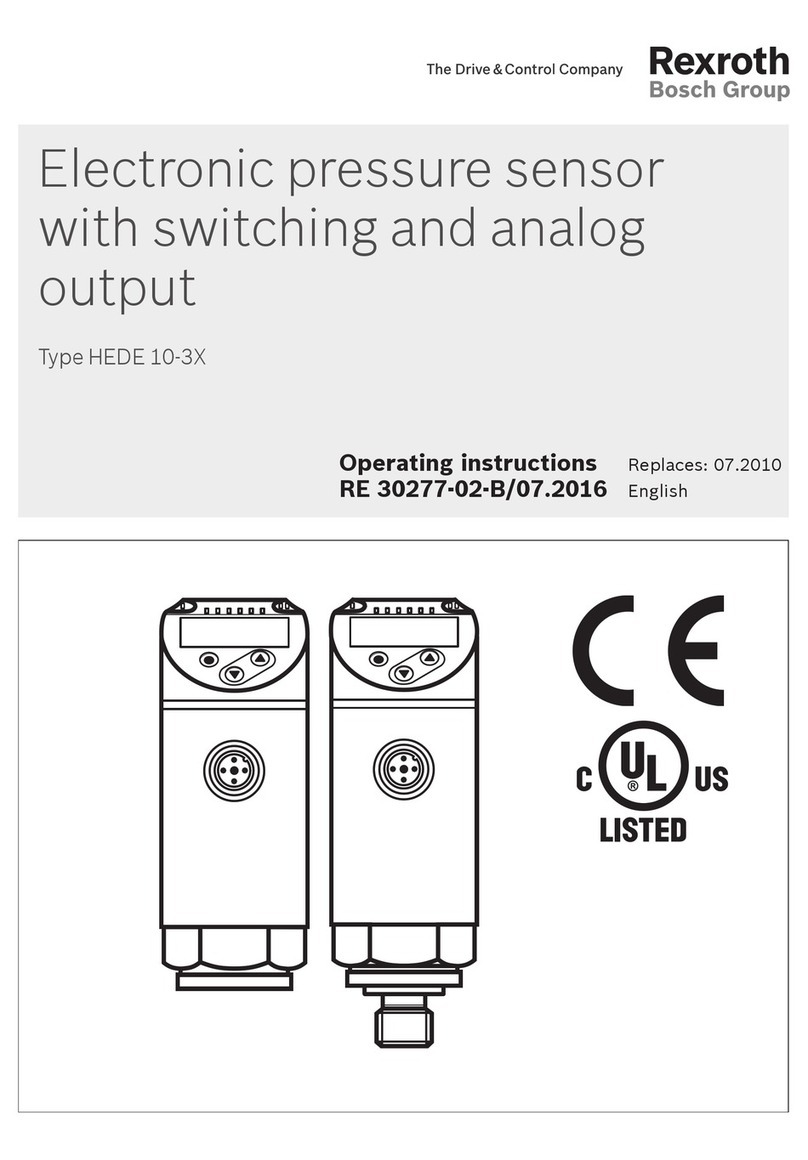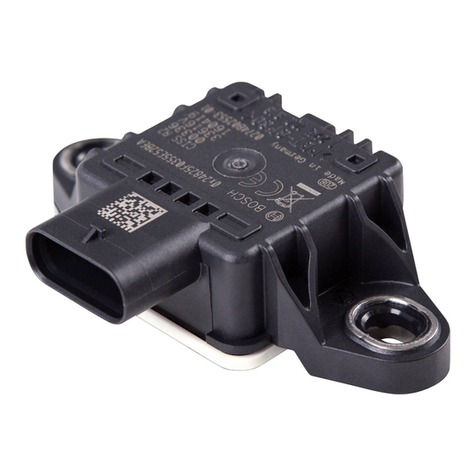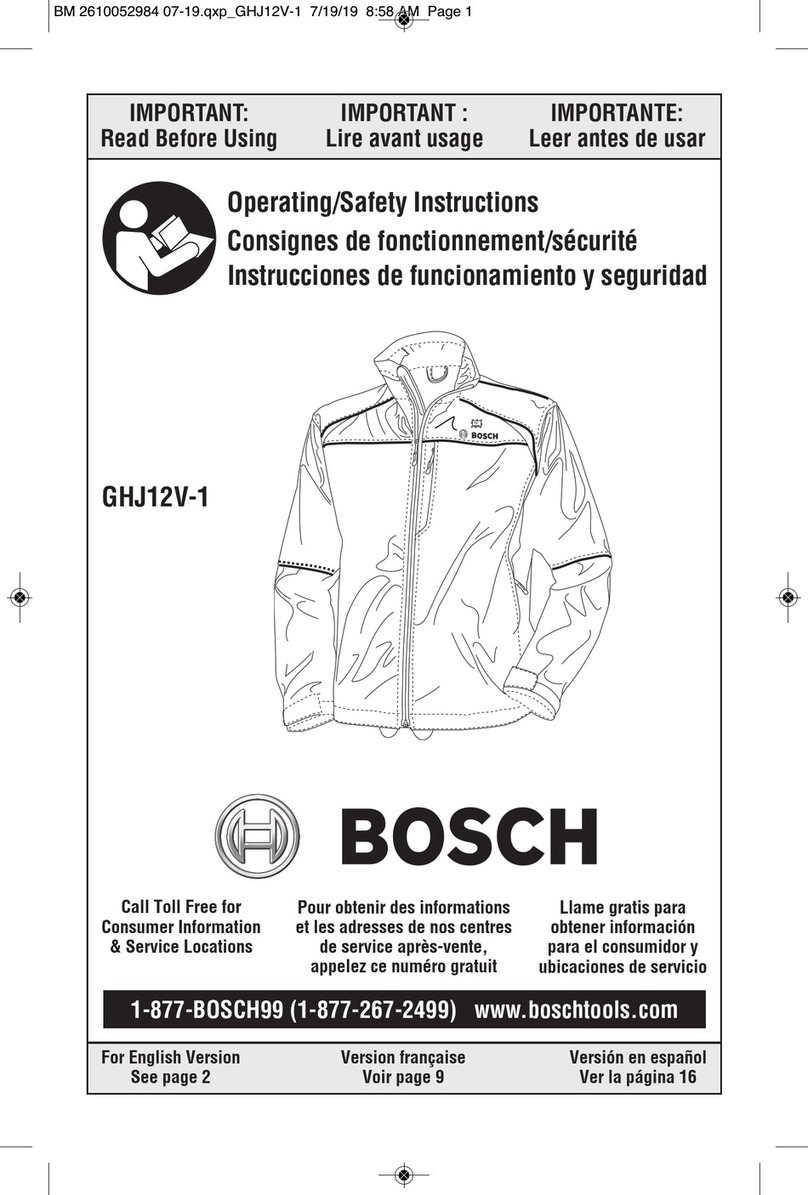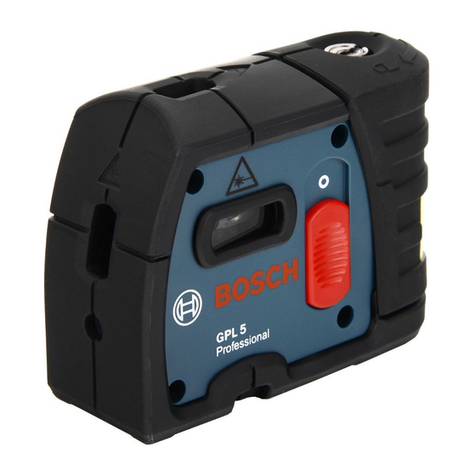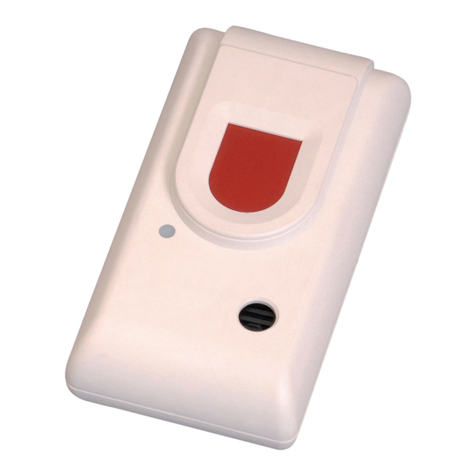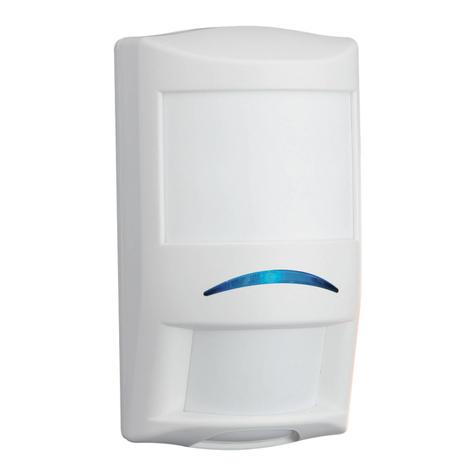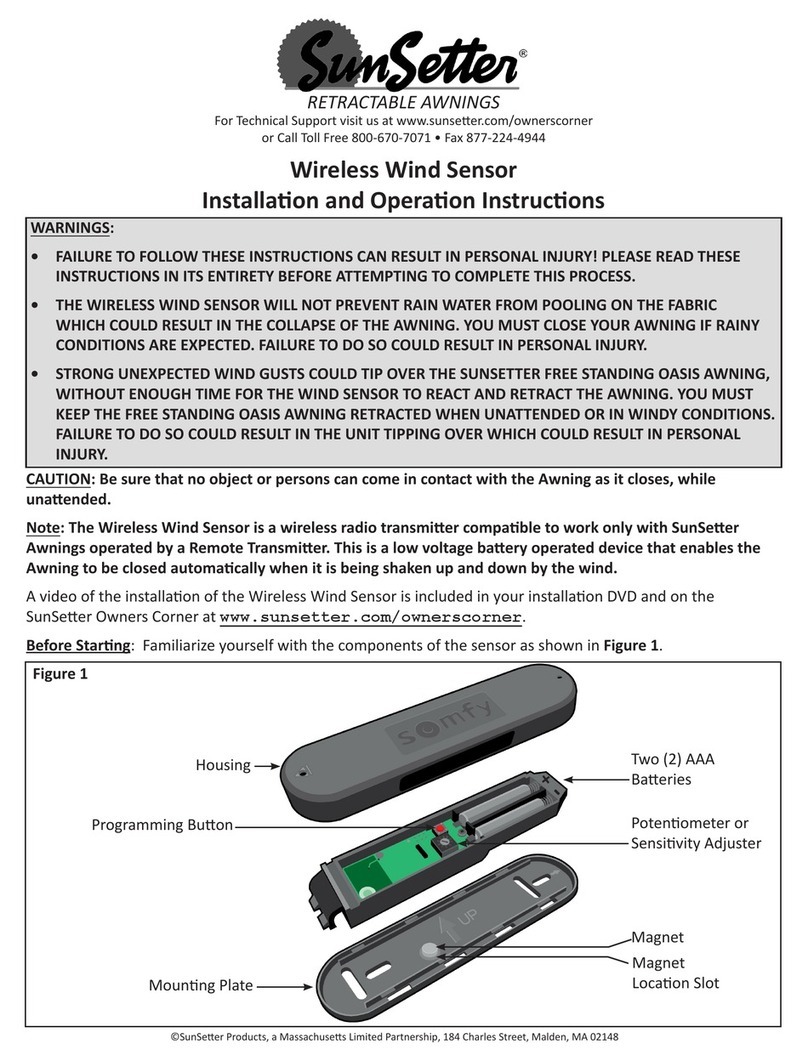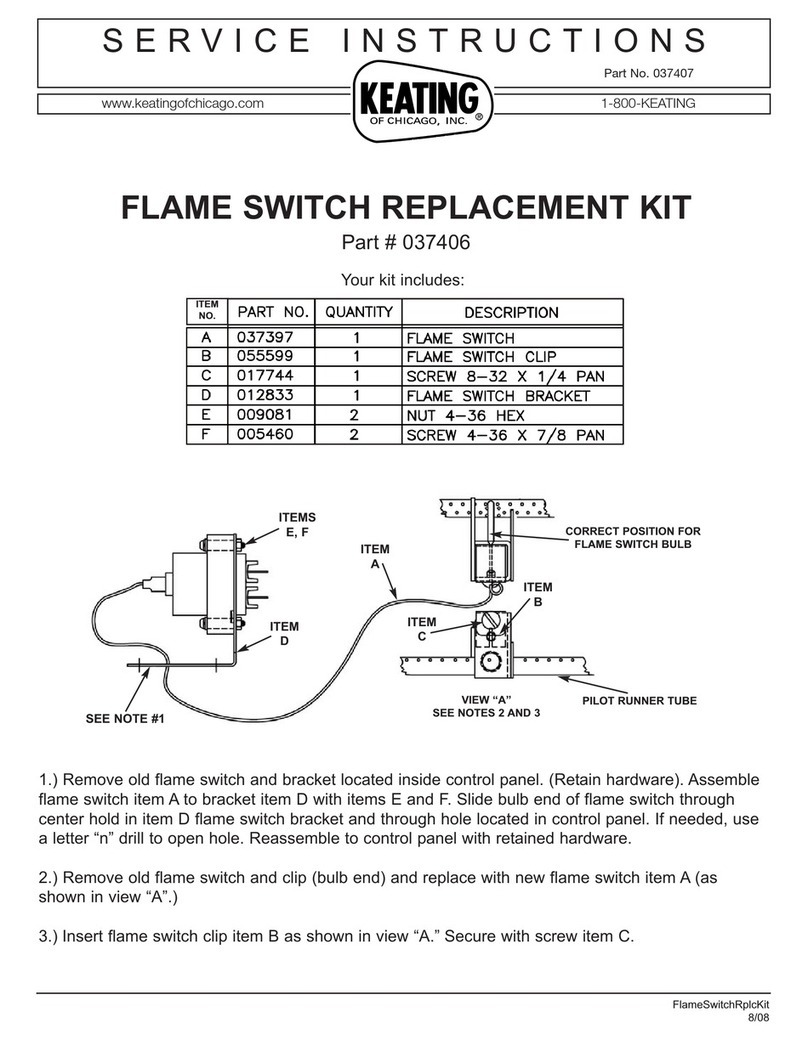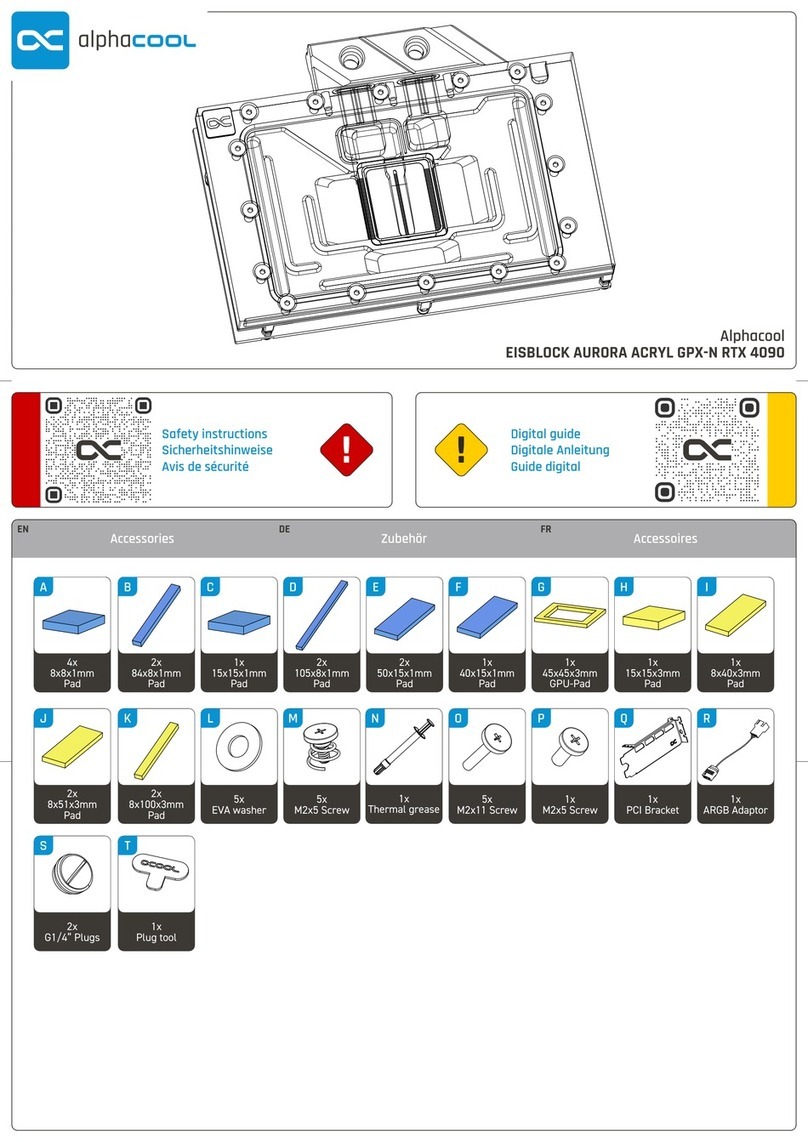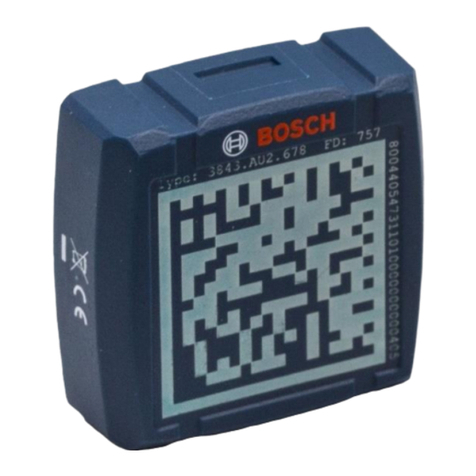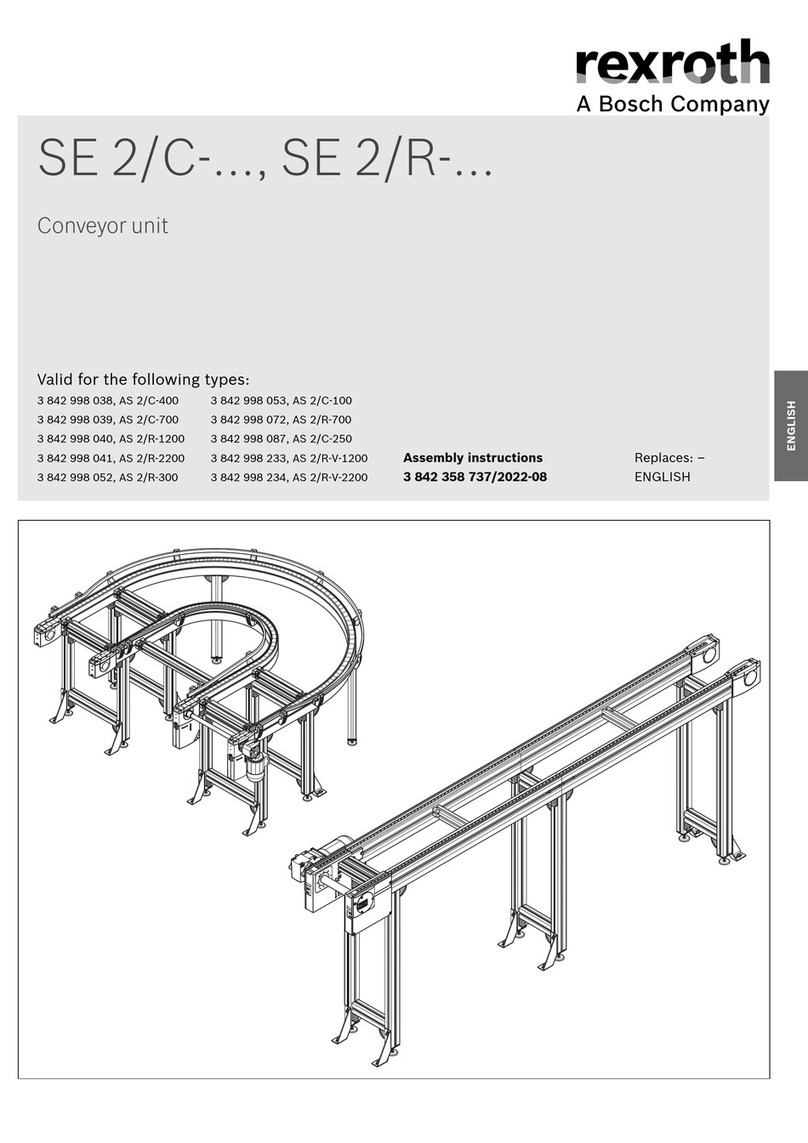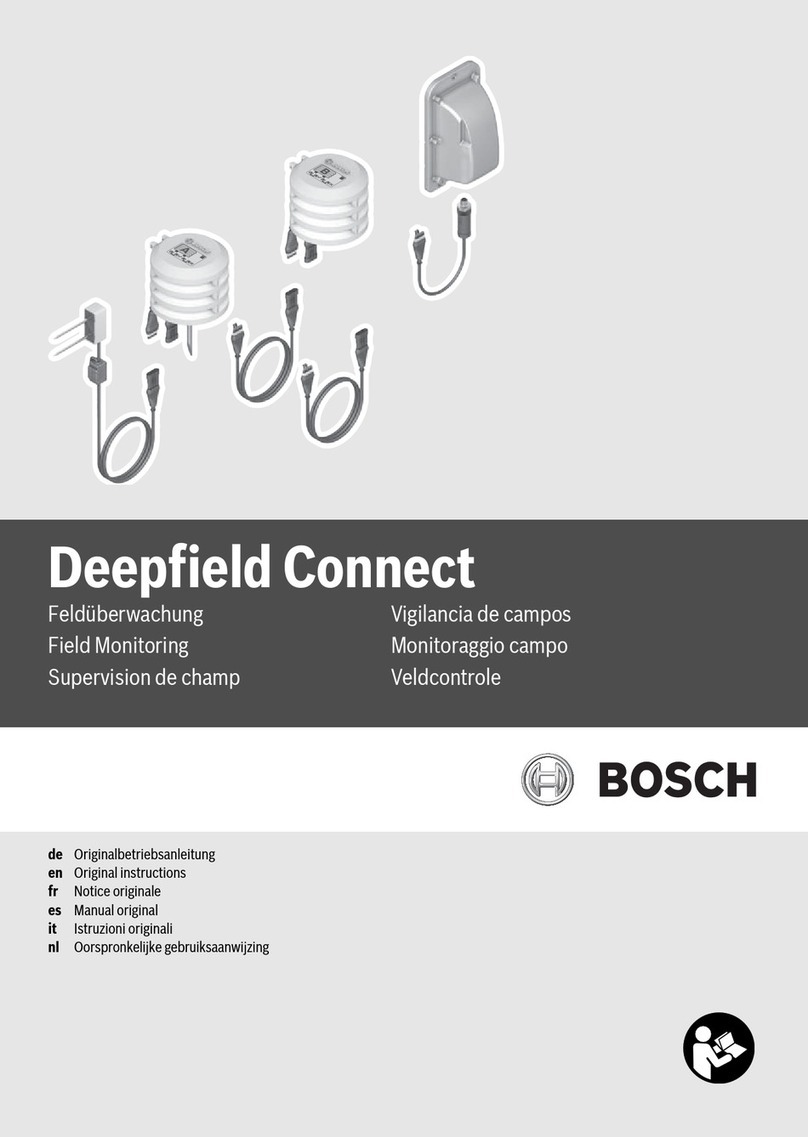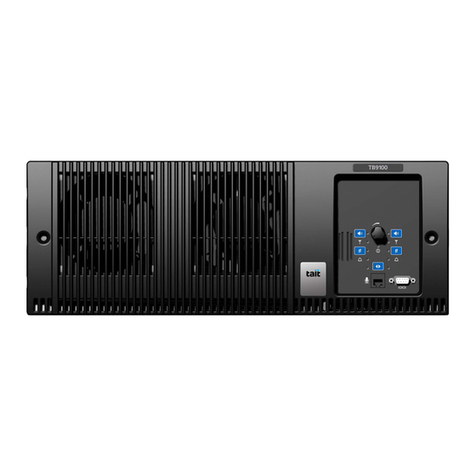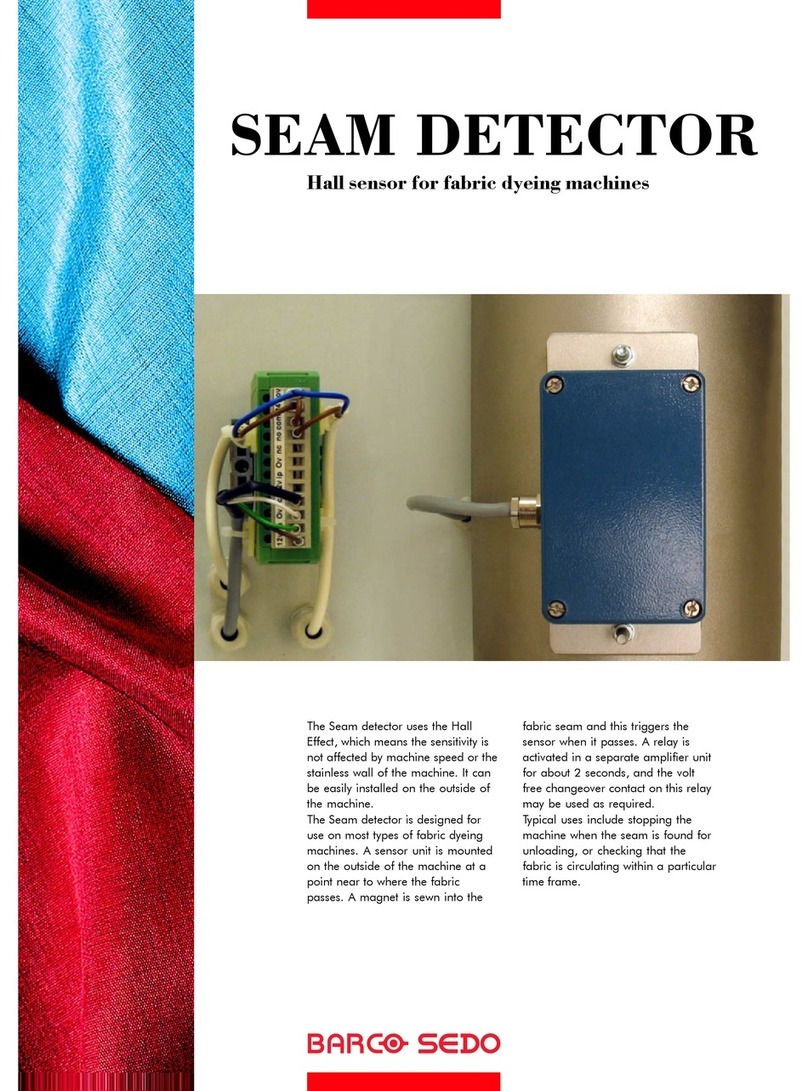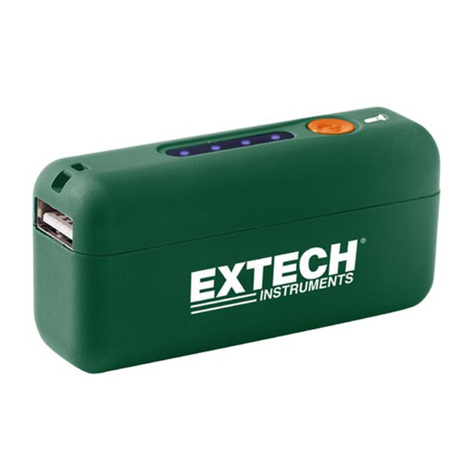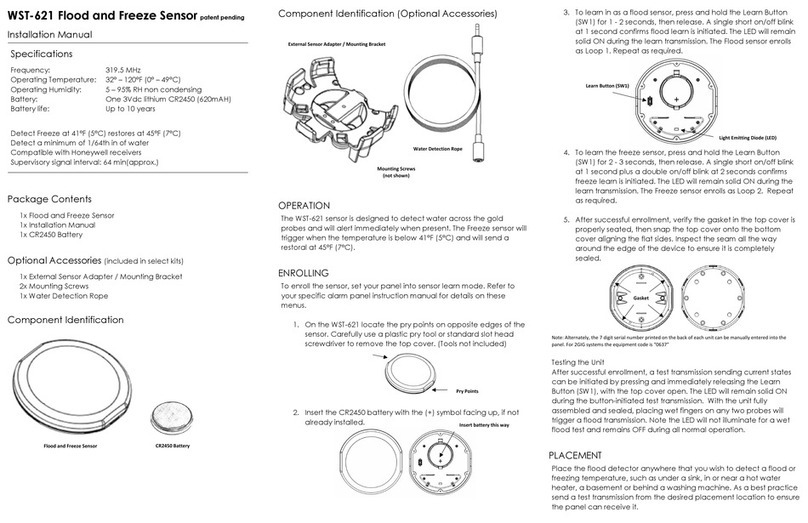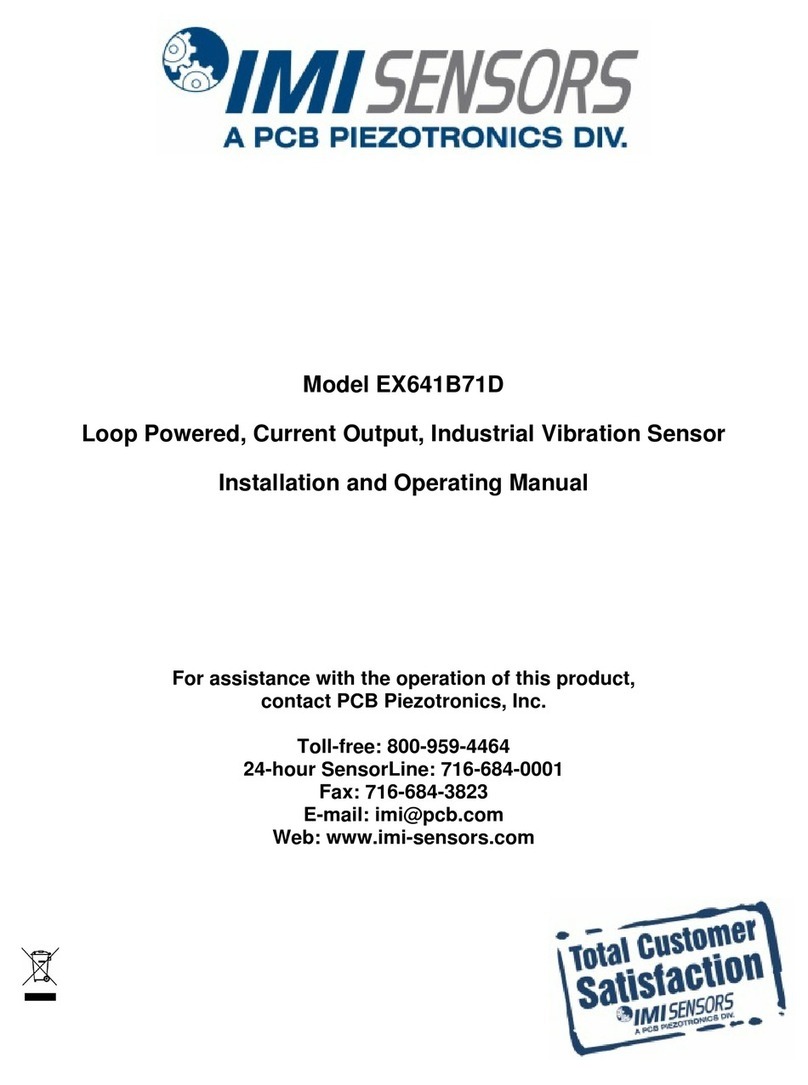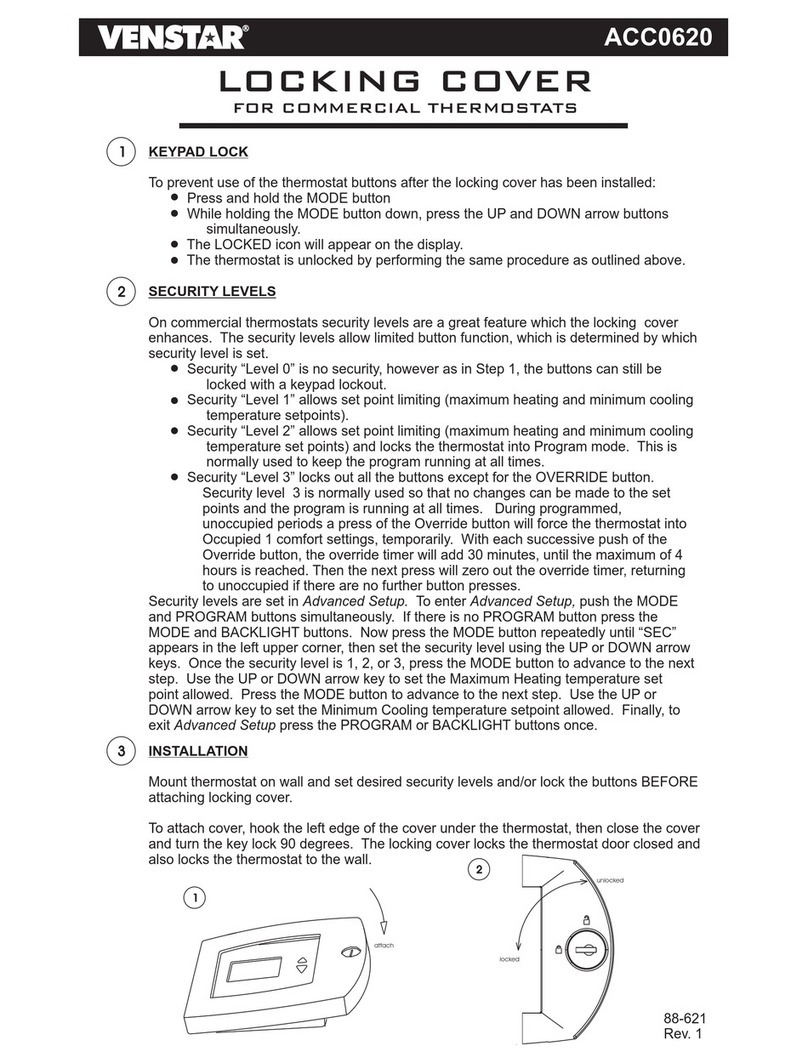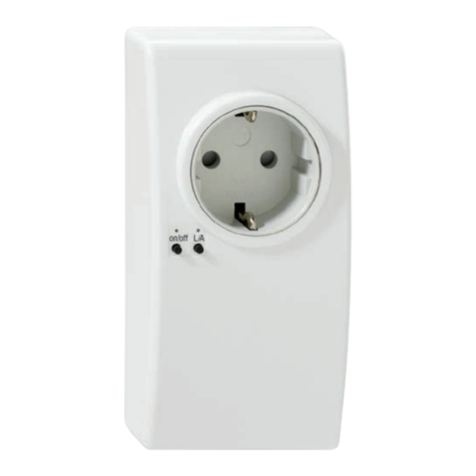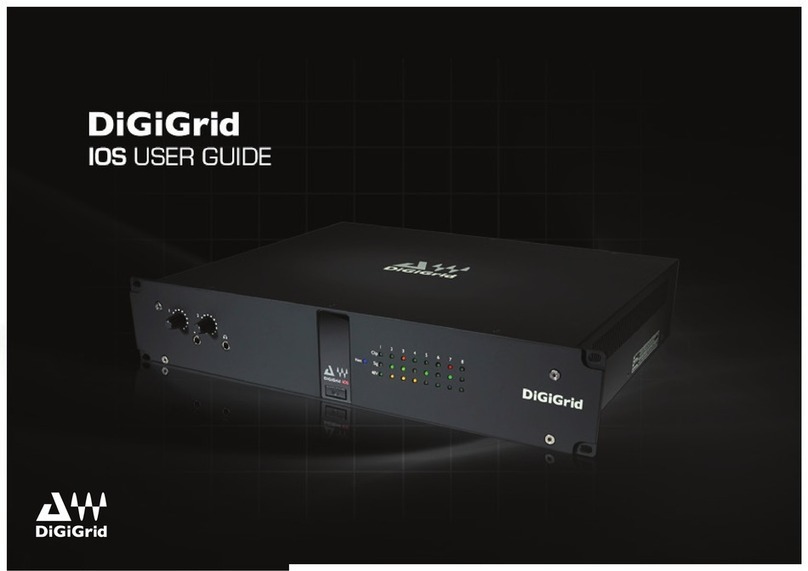
DS924i/P Installation Instructions © 2004 Bosch Security Systems Page 3
7.0 Testing
Pattern Testing
Pressing the Walk Test Switch will start a 90 second Walk Test Mode.
During this Test Mode, any activity in the sensor’s coverage pattern will
cause a transmitted alarm and LED activation. Each alarm will also extend
the Test Mode for an additional 90 seconds.
Walk Testing should be done across the coverage pattern. The edge of the
coverage pattern is determined by the first flash of the LED. This may
change slightly depending upon the sensitivity setting. Walk Test the unit
from both directions to determine the pattern boundaries.
NOTE: Excessive use of the Walk Test Mode may reduce battery life.
Use only for initial setup and maintenance testing.
If the rated range cannot be achieved, adjust the pattern up or down to
assure the pattern is not aimed too low or high. The vertical angle of the
pattern may be changed by adjusting the swivel bracket and/or by moving
the circuit board vertical adjustment between -10° and +2° . Loosen the
Vertical Adjust Screw to slide the circuit board. Moving the board up will
angle the pattern downward. Tighten the Vertical Adjust Screw when
positioning is complete.
The detection pattern may also be shifted ±10 degrees horizontally by
rotating the lens left or right to the appropriate marks on the lens frame.
RFTESTING
The actual RF transmitter range can be determined by performing a Dealer
Sensor Test as follows:
• Remove the sensor’s cover and press the Walk Test Switch. Refer to
Figure 3 for the switch location.
• Replace the sensor’s cover.
• Using the appropriate touchpad for the Control Panel, enter the Dealer
Sensor Test Code.
• Move across the detection pattern until the sensor’s LED turns on. STOP
your motion.
• Note the number of siren beeps indicating how many RF packets the
control panel received from the sensor. You should hear 7-8 beeps. If
you hear 6 or fewer beeps, relocate the sensor and retest.
Final Testing
Turn on all heating and air conditioning sources which would normally be
active during the protection period. Stand away from the sensor and
outside the coverage pattern and watch for alarms.
After setup and tests are completed, and there has been no activity in the
sensor’s coverage pattern for approximately 90 seconds, the LED will flash
to indicate that the Walk Test mode is ending.
NOTE: When the Walk Test Mode has ended, an alarm can be transmitted
only after three (3) minutes have passed since the previous alarm.
This 3 minute lockout time reduces unnecessary RF transmissions
in high traffic areas thereby extending battery life.
8.0 Maintenance
At least once a year, the range and coverage should be verified for proper
operation. To assure daily operation, the end user should be instructed to
walk through the far end of the coverage pattern to verify an alarm output
prior to arming the system.
Battery Installation
The sensor is normally shipped with its battery installed. If battery
replacement is necessary observe proper polarity when installing a new
battery or the sensor may be damaged. When the battery is replaced, wait
at least 5 minutes after installing battery before activating the Walk Test
Mode.
9.0 Pet Avoidance Lens Guidelines
The Pet Avoidance Lens provides protection in installations where pets
move about freely.
• Allowed mounting height is between 3 and 5 feet.
• Position the sensor to have a clear line of sight across the protected
room.
• For best results, install the sensor no lower than twice the height of the
pet.
• Make sure the field of view is free of furniture or other objects upon
which the pet could climb or jump, resulting in unwanted alarms.
Coverage Masking
The Masking labels provided are cut to match the corresponding lens
segments.
• Determine which detection zone/lens segment needs a masking label.
• Peel the desired mask label from its backing and apply to the inside of the
lens segment to be blocked.
FCCNOTICE
This device complies with Part 15 of the FCC Rules. Operation is subject to
the following two conditions:
1) This device may not cause harmful interference.
2) This device must accept any interference, including interference that
may cause undesired operation.
Changes or modifications not expressly approved by Interactive
Technologies, Inc. can void the user’s authority to operate the equipment.




